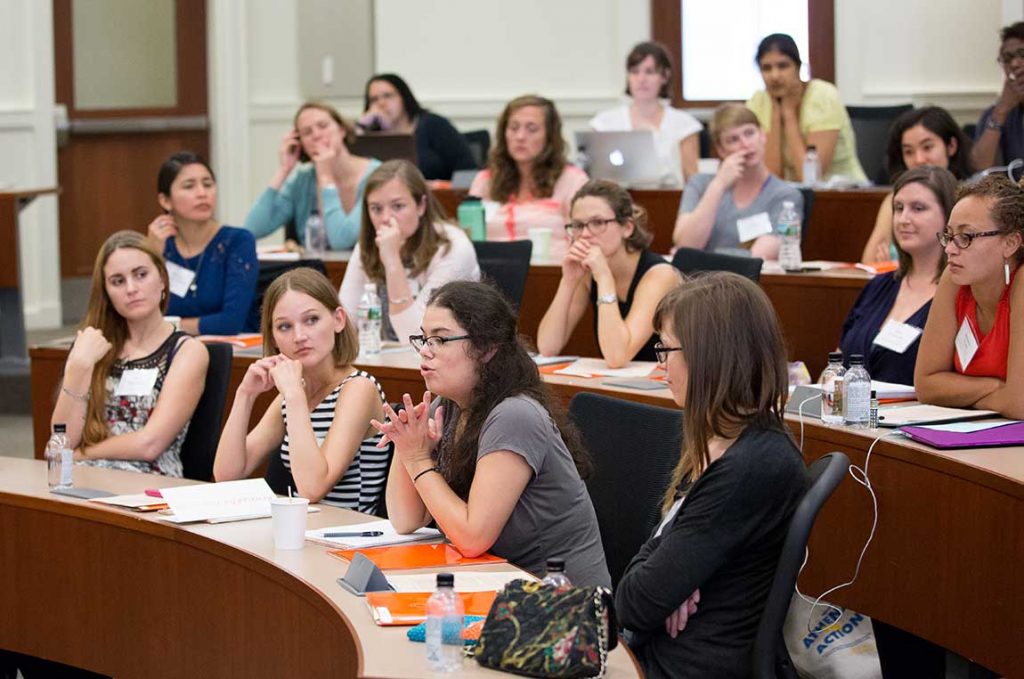 If the age-old theory of soulmates is but a theory, why are so many inclined to believe in it—is it really just a myth? Or is there some merit to this theory?
If the age-old theory of soulmates is but a theory, why are so many inclined to believe in it—is it really just a myth? Or is there some merit to this theory?
Believe it or not, the theory of soulmates has left an indelible mark on cultures around the world. Evidence of the belief can be seen in religious and traditional practices such as Judaism, Hinduism, the ancient Chinese principles of Yin and Yang, and has even made its way into the broad ranks of American cinema.
The idea of romantic love has been around for ages, probably since the dawn of time. And while it is a relative term, it is generally accepted as a notion of significant, intimate connections. Love, is a process—over time—when emotional bonds are formed between people who connect with one another on deeper levels such as kinship, commonalities, or aesthetic attractions. But how do you explain a bond that is formed instantaneously? Some call it love at first sight, others refer to this phenomenon as a possible soulmate or twin flame connection.
The theory of soulmates was first made popular in Plato’s Symposium dated c. 385-370 BC. According to Greek mythology, humans were originally created with four arms, four legs and a head with two faces, which would eventually be split into two separate parts or entities, condemned by the Greek God, Zeus, to spend their lives in search of their other halves. It has been said to have entertained many, but perhaps there is some merit to this myth.
If you live on the planet earth, you’ve probably heard the phrase, “You complete me,” in some way, shape or form. Now a cliché, it was first made popular by the 1996 drama, Jerry Maguire, when a man uses sign language to confess his love to his significant other—it became the ultimate motto for this “soulmates” type of love. The word as defined by some, is the masculine and feminine equivalent energies. And by way of etymology, the Greek root word [andros] meaning masculine or of man and [gyne] meaning feminine or of woman, combine to make the word androgyny, which is the characteristics of both sexes expressed in one individual. (Androgynous figures occurred frequently in Greek mythology, often depicting an attractive blend of male and female characteristics.)
It may sound ridiculous, but perhaps ‘metaphoric’ is a better way of describing it. According to quantum physics, the universe is made of energy. In fact, everything is energy moving at a certain frequency that attracts other energy moving at the same frequency. Like energy attracts like energy, which clearly defines the laws of attraction. We as humans, are made up of atoms, which at the deepest level, is nothing more than waves of energy, so we too, are energy. Chaos Theory teaches us that energy seeks to complete itself. Could this be the underlying cause of why opposites (in every sense of the word) tend to attract? Much like in Plato’s Symposium, many people today feel they need another person to complete not just their lives, but themselves. Studies show that people all over the world search unconsciously, for a partner who possesses qualities and traits which they lack.
One such study conducted by Maristpoll in 2011 found that 73% of Americans reported they believe two people are meant to be together, compared to only 27% of who don’t. Surprisingly 74% of the men surveyed as compared to 71% of women believed there is an ideal partner for them. Who knew? In American culture, the ideation of romantic love between soulmates is a highly romanticized one and has become a recurring theme in American cinema.
Hollywood, the universal icon of entertainment, has made a major impact on cinema since the early twentieth century, and continues to evolve its global influence. Over the years, Hollywood has imbued international audiences with important historical documentaries, fine drama, hilarious comedy, and visually stunning action on the big screen. And when it comes to romance, American film makers certainly know how to reel in an audience. With some of the top grossing films surrounding love and romance, as it turns out, the soulmate theory is a winning formula that resonates with many cultures around the world.
Serendipity, the 2001 romantic comedy starring John Cusack and Kate Beckinsale, is a classic example of the soulmate theory. Two people meet, fall in love and ironically become separated by a twist of fate, (such as the ill-fated punishment imposed by the Greek god, Zeus in Plato’s Symposium). Still convinced that they belong together, years later the two embark on a seemingly inevitable mission to find each other only to experience a series of trials and tribulations in the process.
Today, most all religious paths in the Indian subculture are classified as a single tradition known as Hinduism, encompassing roughly 79% of India’s population (the oldest evidence of religious practices in India date back approximately to 5500 BCE). In Hindi culture, there is a certain belief that everyone has a karmic connection with certain souls. An example of this belief could be found in the Academy Award winning, 2004 romantic science fiction comedy-drama, Eternal Sunshine of the Spotless Mind. The Best Original Screenplay stars Kate Winslet as one half of a troubled couple in love, who, after a disheartening breakup, undergoes a procedure to erase the memories of her better half, played by Jim Carrey, who later undergoes the same procedure. It works, and they forget about each—until they meet and fall in love again.
According to Jewish tradition, the Oral Torah was passed down orally in an unbroken chain, from generation to generation, until its contents were committed to writing in 70CE. The word “Bashert,” is a Yiddish word which means destiny, can be found in its contents. The word is often used in context of one’s divinely foreordained spouse, or soulmate who is called “basherte” (female) or “basherter” (male). There is also a Jewish notion called hevruta, which means learning partner, or one who pushes and challenges another. This belief can possibly be identified in the 1989 romantic comedy, When Harry Met Sally. Two college graduates and complete opposites, played by Meg Ryan and Billy Crystal, find themselves in an ongoing argument about whether or not men and women can ever truly be strictly platonic friends, on a long drive from Chicago to New York. Ten years later, they meet again and form a deeper relation as friends and embark on a journey to stay friends without sex becoming an issue between them.
In ancient Chinese philosophy and culture, the principle of Yin and Yang is a fundamental concept dating back to the third century, BCE. It is the idea that all things exist as inseparable and contradictory opposites. This principle forms a basis of equilibrium within nature, the cosmos, and even human nature itself. An example of this philosophy is metaphorically evident in the 2004 romantic drama, The Notebook, based on the original 1996 novel, written by Nicholas Sparks. It is a story within a story, as an elderly man reads a nursing home patient a love story from his notebook about a young couple, played by Rachael McAdams and Ryan Gosling, who fall in love, blinded to the opposition of their life circumstances— she’s rich and he’s unacceptably poor. The two separate and are kept apart over the years, unknowingly, by the young woman’s mother. But as fate would have it, they find each other again and all is revealed.
It is said that Yin and Yang affects the male in his organs, his activities and relationship to the environment. In psychology, intuition is defined as a person’s capacity to obtain or have direct knowledge and immediate insight without observation or reason. We often call this phenomenon a “gut feeling,” but scientists and medical professionals refer to it as the “second brain.” The gut or ENS, the enteric nervous system, actually works independently of the brain. In fact, the ENS sends signals to the Brain that directly affect our feelings. In a recent article, Francis Cholle, founder of The Human Company, makes a clear distinction between this “gut feeling” or haunch, which he describes as a sensation that appears quickly in consciousness, one that is noticeable enough to act upon if one chooses without being fully aware of the underlying reasons for its occurrence. “As a culture, we have learned to believe that rationality is what should prevail when making decisions about anything from crucial business mergers to what to eat for lunch. But what of that “inner voice,” that gut feeling, that little something instinctual from within that tells us how we feel beneath those layers of logic?”
Bringing it back full circle, Plato, the author of Symposium, the work that first brought the soulmate theory to light, is also the author of these words: “We have within us, true thoughts which only need to be awakened into knowledge by putting questions.” While there is no solid, scientific evidence of so-called soulmates, there is plenty of intellectual proof in the pudding. Soulmates may have started as myth, as many theories do, but does that mean its origin has no merit or basis in reality? Certainly not. The root of many modern-day mysteries still lies within folklores, symbolism and tall tales of the past, some of which we may never fully understand, but one thing we must all agree upon is that our ancestors were an intelligent and evolving species, which is why certain traditions that have been passed down for centuries, are still alive and well in our hearts and culture today.
Find Candice on Twitter: @Cstockstell
Other Articles by the Author
 What is Aesthetics? In this brief overview of aesthetics, Candice considers the views of Wittgenstein and Hume who attempt to shed light on whether aesthetic value is in things themselves or consists in the personal sentiment of what each of us finds beautiful
What is Aesthetics? In this brief overview of aesthetics, Candice considers the views of Wittgenstein and Hume who attempt to shed light on whether aesthetic value is in things themselves or consists in the personal sentiment of what each of us finds beautiful









